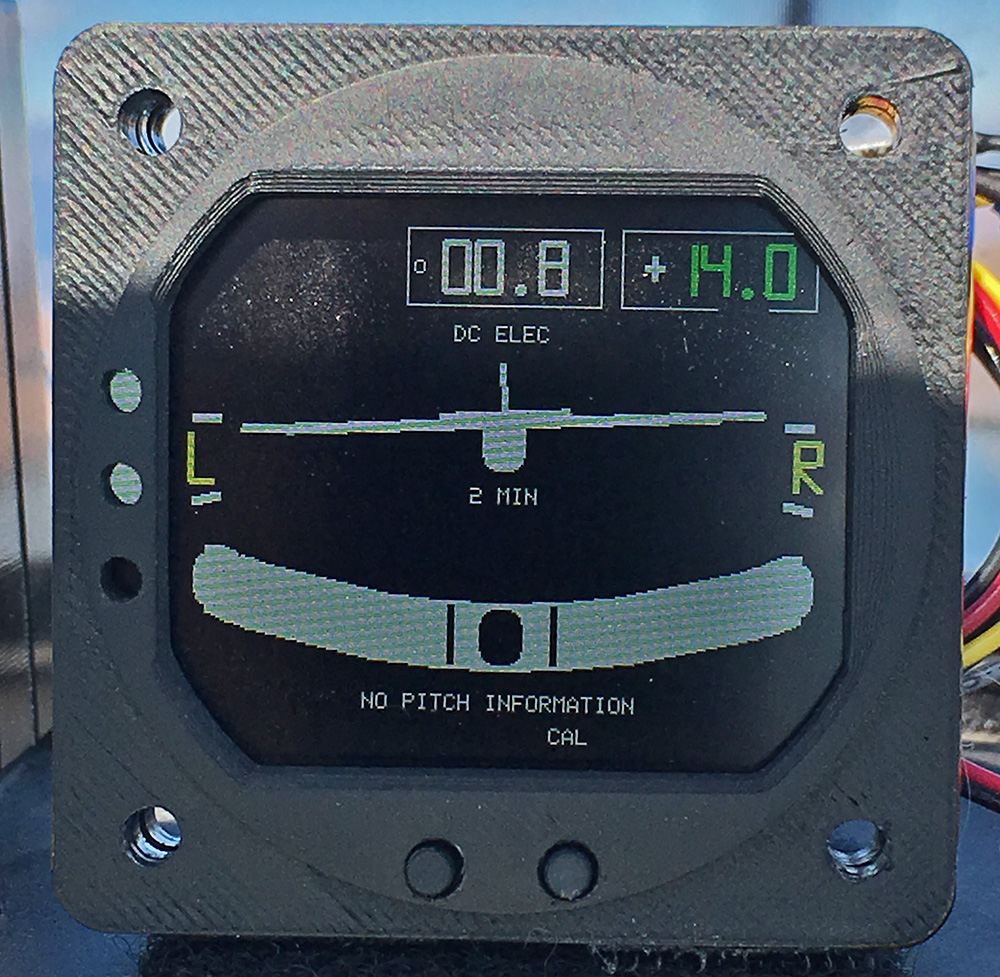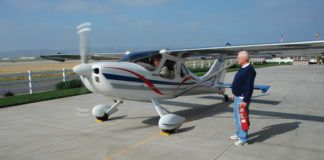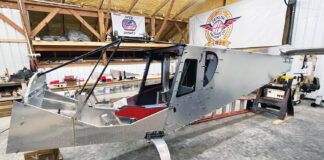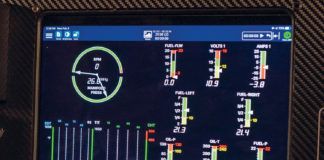It says right here, in my own handwriting on my kneeboard – “It just works! I think I might have been upside down in a loop at the time, trying to scramble this little device’s brains – but I wasn’t able to, no matter how hard I tried. The “little device” is the new digital, solid state turn coordinator from Belite – the makers of small, light airplane kits and gadgets for their panels. Their latest offering is something that will make folks looking for discrete gauges sit up and take notice.
The instrument is compact and light – when the box shows up at your door, you might think it is empty. Less than an inch thick and sized to fit in a 2-1/4″ panel cutout, the device just needs power to operate. In our temporary installation, I hooked up a cigarette lighter plug, attached two small strips of Velcro to the bottom, and stuck it on the glare shield of my RV-8. “Installation” took about as long as it took to write that.
The unit comes with a 9 volt battery connector attached to the power and ground leads, and a fresh battery will power it up – but the voltage readout showed 8.9 volts, and James Weibe, the creator and owner at Belite – told me that he has disabled the actual indications at anything below 10 volts to ensure that it is accurate. So if you try the 9 volt, you’ll get the screen, but no ball or little airplane. You will, however, get a very accurate volt meter – a nice touch. And it will operate at anything between 10 and 60 volts!
Once connected to appropriate power, the ball and turn coordinator become active, and it works like any old TC that costs a whole heck of a lot more than the list price of $299…and anyone with any certified airplane experience knows that the old stuff will work until the mechanical parts get upset – then you’re looking at repair bills in excess of this little jewel’s price.
So in the age of big, all-inclusive EFIS’s, who needs a turn coordinator? Well, anyone building super light and simple will find that this is an excellent piece of safety equipment to add to the panel (assuming you still know how to fly needle/ball/airspeed). Lots of simple airplanes do just fine without a full-featured EFIS, and this is a great way to inexpensively add to a small, simple panel. If that fits your mission, this is probably the simplest solution to turn rate data – worth a look.
And like I said – it just works.














